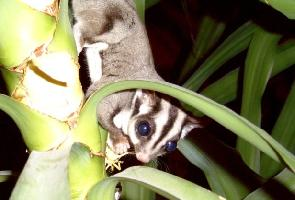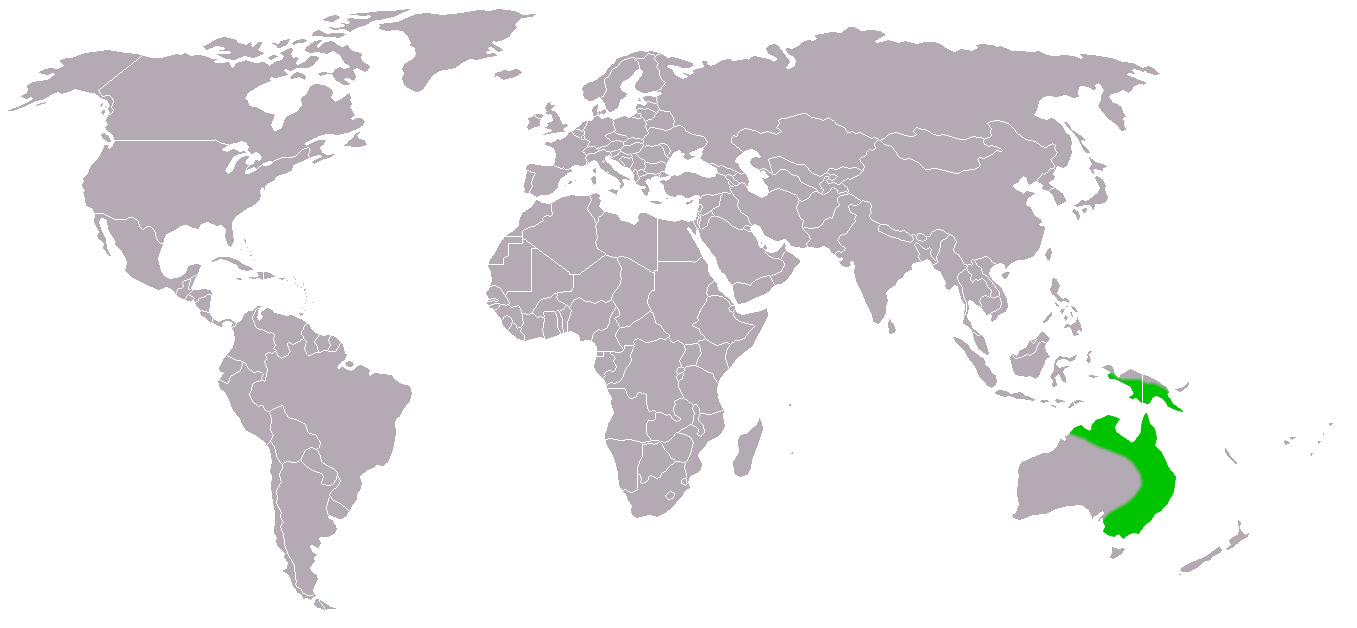
Állatleírás
The Sugar Glider (Petaurus breviceps) is a captivating small marsupial native to Australia, New Guinea, and certain Indonesian islands. Belonging to the family Petauridae, this species has endeared itself to people around the world, not only because of its adorable appearance but also due to its unique behaviors and fascinating biology.Physically, sugar gliders are diminutive yet perfectly adapted to their arboreal lifestyle. They typically measure between 16 to 21 centimeters in length, which includes their bushy, prehensile tail that adds another 17 to 21 centimeters. Their body weight ranges from 90 to 150 grams, making them lightweight and agile climbers. One of the most distinctive features of the sugar glider is its patagium, a thin, fleshy membrane that stretches from their forelimbs to their hindlimbs. This skin flap enables them to glide effortlessly between trees, covering distances of up to 50 meters in a single leap. This remarkable ability is not only a mode of transportation but also a means of escaping predators.
The coat of the sugar glider is soft and silky, predominantly silver-grey with a black dorsal stripe that extends from the middle of the head to the tail. Their underbellies are typically a creamy white or light yellow. They possess large, forward-facing eyes that grant them excellent night vision, crucial for their nocturnal lifestyle. Their ears are large and can move independently, allowing them to precisely locate prey in the dark.
Sugar gliders are omnivorous, with a diet that includes a variety of insects, sap, nectar, and occasionally small birds or eggs. They have a particular fondness for the sweet sap of certain trees, which is how they earned their name. In the wild, they are adept at foraging and can consume up to 11% of their body weight in a single night.
Socially, sugar gliders are highly communal animals. They live in groups called colonies, which can consist of up to seven individuals, though larger groups are not uncommon. These colonies are tight-knit, with strong bonds formed through grooming, vocalizations, and sleeping huddled together for warmth. This social structure is essential for their survival, providing protection against predators and helping individuals locate food.
Reproduction in sugar gliders involves a gestation period of about 15 to 17 days, after which the female gives birth to one or two tiny joeys. These underdeveloped newborns then make the perilous journey to the mother's pouch, where they continue to develop for the next 60 to 70 days. Once they leave the pouch, they remain dependent on their mother for another two to three months before becoming fully independent.
In recent years, sugar gliders have gained popularity as exotic pets, largely due to their friendly and sociable nature. However, they require a significant amount of care, including a specialized diet, a spacious cage for climbing and gliding, and social interaction, either with their human caretakers or with other sugar gliders.
Despite their allure, the wild populations of sugar gliders face several threats, including habitat destruction, climate change, and predation by introduced species like cats and foxes. Conservation efforts are ongoing to ensure that these enchanting creatures can glide through the forests of their native habitats for generations to come.
Előfordulási térkép

Hasonló állatok
Új állatfotók
Top 10 állat
- Diana monkey (Cercopithecus diana)
- Dolphin gull (Leucophaeus scoresbii)
- Moustached guenon (Cercopithecus cephus)
- Galápagos tortoise (Geochelone nigra complex)
- Stone loach (Barbatula barbatula)
- Japanese spider crab (Macrocheira kaempferi)
- Colossal squid (Mesonychoteuthis hamiltoni)
- Common house mosquito (Culex pipiens)
- Common reed warbler (Acrocephalus scirpaceus)
- Sea urchins (Echinoidea)
